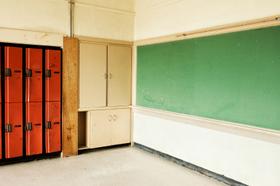One of the largest school districts in the country is revolutionizing the way students learn in the classroom by incorporating technology into the lesson plan. A new program in Mobile County, Alabama, called Bring Your Own Device or BYOD, is creating a fun, interactive way of learning in select classrooms across the district. Teachers, as well as students, are embracing the ability to use technology to enhance the learning experience. As the program takes off, the expectation is that it will spread throughout the entire county by the beginning of the next school year.
How it Works
BYOD is a learning program that allows students to bring smartphones, laptops, reading devices or tablets into the classroom every day. The students then use those devices during lesson plans, for everything from researching a specific topic to taking pop quizzes designed by their classroom teacher. Students use the devices they are already familiar with, allowing them to adapt to the new method of teaching much more quickly.
According to AL.com, the new program has been implemented in a number of pilot schools throughout Mobile County. The program differs significantly from the technology integration taking place in neighboring Baldwin County, which has purchased a laptop for every student in the district. By allowing students to bring their own devices from home, the school district is able to save a significant amount of money without sacrificing the learning experience of the students.
A recent survey cited at AL.com showed that approximately 75 percent of students in Mobile County own some sort of wireless device, regardless of family income. Students that do not have a device to bring may get a device from their school. Schools participating in the BYOD program must show they are able to supply a device to any student that does not own one. In addition, Fox 10 reports that many students share with others in the classroom that do not bring their own devices.
“We use it in group work for the most part, and it works out great,” David Akridge, Mobile County Public School System Director of Technology, told Fox 10. “I’ve never had a child not want to share a device. But the kids are really willing to share and they like working together; they would rather work in a group.”
This video reports on how technology is changing classrooms.
From Kindergarten and Up
Although the new BYOD program is still in its pilot stage, it is already a hit with students and teachers alike. At one Mobile school, Mobile Magnet, students are getting online as early as kindergarten. Students in these classes can log onto their devices to get into a school reading program that allows them to read books on their individual levels. One of the kindergarten teachers at Mobile Magnet, Kathy Sims, told AL.com that the online system is helpful since she has students reading at various levels in her class.
“This is their generation,” Sims said. “They have so much information at their fingertips. We don’t want to hinder that; we want to help that.”
Akridge told AL.com in a separate article that the students in Mobile County do not see the use of the devices as “technology.” The current generation uses devices as a part of everyday life. Until recently, the only place technology wasn’t incorporated was in the classroom. Incorporating this aspect of their life into the classroom through BYOD offers students a greater comfort level and the ability to utilize the information they use regularly at home. Akridge stated the addition of technology in the classroom has rebuffed the boredom factor and allows students the opportunity to collaborate in the way they like best – digitally.
This TEDTalk looks at the pros and cons of technology in the classroom.
Benefits to Teachers
The benefits of adding technology to the classroom are not restricted to students. Akridge told AL.com that teachers are also enjoying the opportunity to take their lesson plans to the next level. He said the most popular use of technology in the classroom for teachers is probably the Smartboard. This option offers both video and audio stimuli for the students, providing interaction opportunities not available in a traditional lecture format.
In addition, the BYOD program offers teachers immediate feedback on whether students truly understand the material being taught. A teacher can give a pop quiz to an entire class, and quickly gauge how the students perform. If most of the questions are not answered correctly, the teacher knows right away to cover the material again to ensure understanding from the entire class. At the same time, students feel a sense of autonomy and independence in finding information on their own.
“I feel like I’m free and I don’t always have the teacher telling me the answers,” one student told AL.com.
Details of BYOD
The first pilot of the BYOD program was done during the last school year, at Cranford Burns Middle School in west Mobile. Since that time, other schools have also begun experimenting with innovative programs. By the first semester of the next school year, Akridge estimates that around 20 of the 89 schools in Mobile County will have variations of the BYOD program in place. Schools are allowed to adopt their own versions of the program, based on the individual needs of the students in that school.
While technology is becoming an essential part of school districts across the country, the evolution has been relatively slow in many areas. The new BYOD program in Mobile County may serve as a prototype for other districts across the country that want to integrate more technology but are limited by budget restrictions.
Questions? Contact us on Facebook. @publicschoolreview















